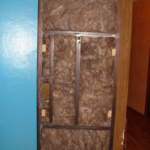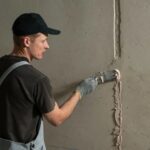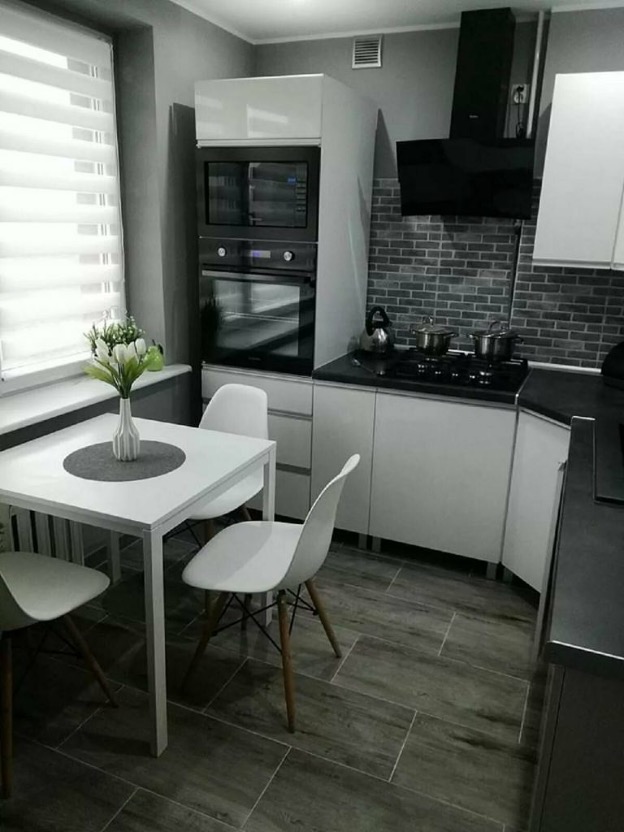Insulation for a flat roof: how to make thermal insulation under a screed
Insulation for a flat roof must be durable, resistant to adverse weather, sunlight and other influences. Many artificial materials fit these criteria, but each of them has its own pros and cons. The best insulation to choose and how to install it correctly is described in detail below.
The content of the article
What material is suitable
Insulation of a flat roof can be done using different materials. These can be both artificial and natural materials, the most common are:
- Expanded polystyrene provides good protection from the cold due to numerous air bubbles. They do not allow heat to pass through and also dampen sounds well. The material is quite light, easy to install, and does not suffer from temperature changes or high humidity, which is especially important when you plan to insulate a flat roof from the outside.
- Loose-fill insulation – expanded clay and perlite sand are often used. Affordable and easy to use, but quickly absorb water. In addition, due to the slope of the roof, it becomes more difficult to ensure uniform thermal insulation. Therefore, it is necessary to know the structure of a flat roof with insulation, as shown in the diagram.
- Mineral wool consisting of basalt fibers. This type of insulation for a flat roof under a screed protects well from the cold, is durable and resistant to fire, and also does not contain harmful substances.But cotton wool absorbs moisture well and begins to deteriorate. Therefore, the installation of a waterproofing layer is required.
- Foam glass is a material that is made from glass melt that has gone through the foaming stage. It has good resistance to temperature, moisture, and exposure to sunlight. This is one of the best options, although the cost is significantly higher.
- Polyurethane foam is a liquid insulation material that is applied directly to the surface. It is also highly resistant to various types of influences, but is expensive.
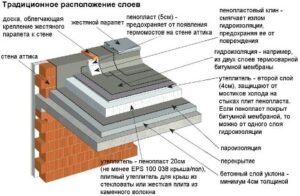
Insulation thickness
Before you understand how to insulate a flat roof, you need to understand what types of structures there are, because the technology for doing the work largely depends on this. There are 2 main types:
- Attics – the ceiling is separated from the attic. In this case, the roof is not heated from the inside, so more layers of insulation will be needed. But there are also advantages, for example, you can think about how to make a usable flat roof, and thus create an attic.
- Roofless, when the structure is combined with the ceiling coming from the inside. The roof warms up well from the inside, so it is insulated in the traditional way - several layers of material are laid and covered with waterproofing.
The very thickness of the insulation for a flat roof depends on the material itself, as well as on the climatic features of the area:
- in the temperate zone (middle zone) a sufficient thickness (using the example of mineral wool) is 100 mm;
- in the northern regions it is necessary to increase to 150-200 mm;
- if the insulation of a flat roof is made of polystyrene foam, then 60 mm is enough for the temperate zone;
- for northern regions, the thickness of polystyrene foam should be 80-100 mm.
How to insulate a roof
Insulation of a flat roof with polystyrene foam can be planned with installation on a profiled sheet. The basic rules are:
- Lay the slabs from the corner, which is located below the milestones. If there is no such place, work begins from the place where the funnel or water gutter is installed.
- During installation, the sheets are placed in such a way that their larger side is perpendicular to the corrugation.
- As a rule, flat roof insulation with mineral wool or polystyrene foam is done in several layers. Then they are arranged according to the brickwork pattern.
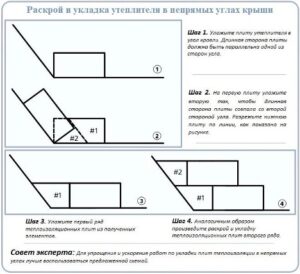
The flat roof insulation pie provides a layer of waterproofing that follows on top of the base material. You can take a bitumen membrane as a basis, lay it in 2 layers and weld it.
At the final stage, the insulation needs to be secured. There are 3 ways to do this:
- Mechanical technology – fixation using telescopic fasteners, which consists of several self-tapping screws. To do this, you need to drive anchors into the concrete slab and attach screws to the screed.
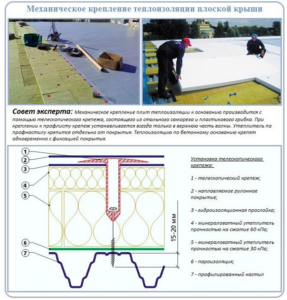
- Adhesive – using mastic of a bitumen-polymer composition. It must be glued evenly so that the insulation is in contact with the base on at least 30% of the area.
- Ballast – the insulation is covered with waterproofing, and gravel mixed with pebbles is poured on top.
Thus, a flat roof is insulated with penoplex, mineral wool and other materials. You can do the installation yourself if you correctly calculate the thickness and do the waterproofing well. Particular attention should be paid to attic structures. They need enhanced insulation, since the roof is not heated from below.


